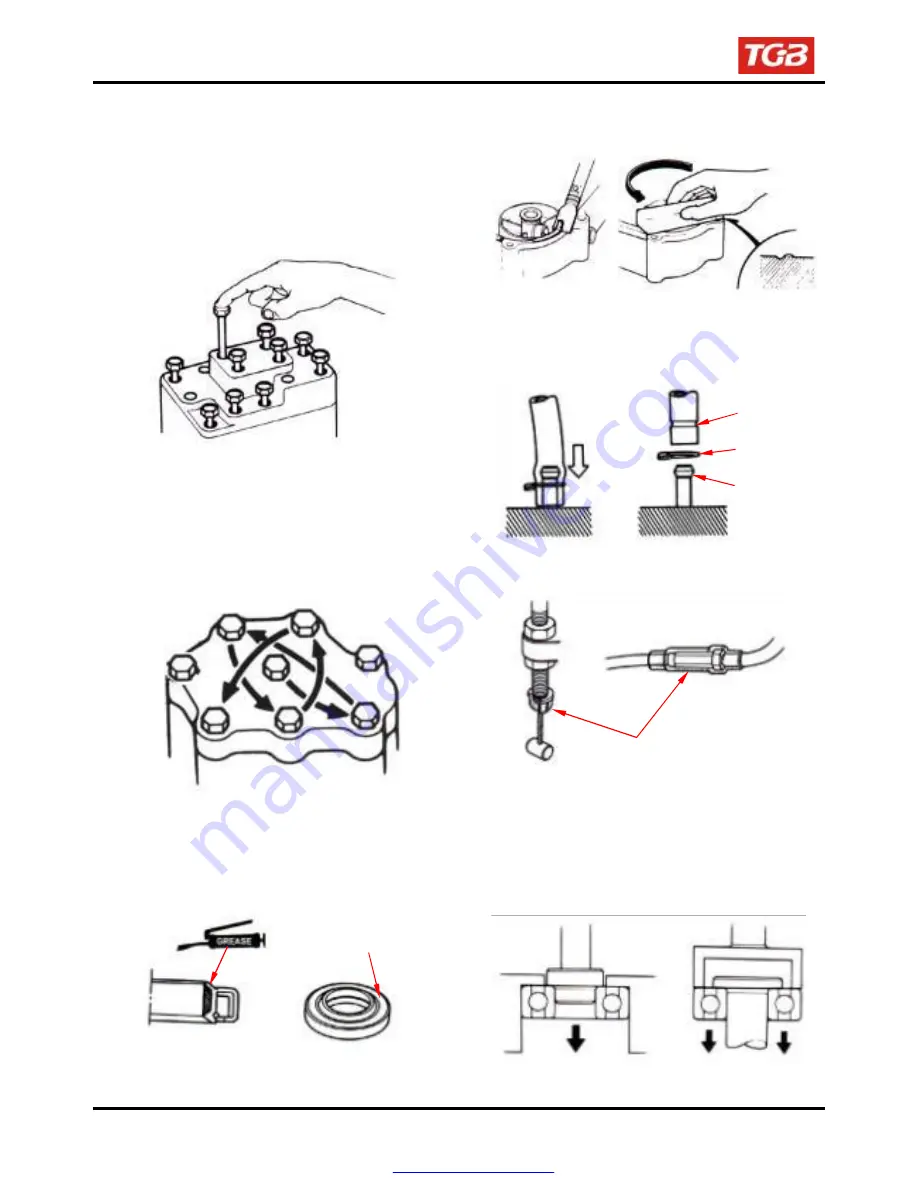
To this chapter contents
1. GENERAL INFORMATION
●
The length of bolts and screws for assemblies,
cover plates or boxes is different from one another,
be sure they are correctly installed. In case of
confusion, Insert the bolt into the hole to compare
its length with other bolts, if its length out side the
hole is the same with other bolts, it is a correct
bolt. Bolts for the same assembly should have the
same length.
●
Tighten assemblies with different dimension
fasteners as follows: Tighten all the fasteners
with fingers, then tighten the big ones with
special tool first diagonally from inside toward
outside, important components should be
tightened 2 to 3 times with appropriate
increments to avoid warp unless otherwise
indicated. Bolts and fasteners should be kept
clean and dry. Do not apply oil to the threads.
●
When oil seal is installed, fill the groove with
grease, install the oil seal with the name of the
manufacturer facing outside, and check the shaft
on which the oil seal is to be installed for
smoothness and for burrs that may damage the
oil seal.
●
Remove residues of the old gasket or sealant
before reinstallation, grind with a grindstone if
the contact surface has any damage.
●
The ends of rubber hoses (for fuel, vacuum, or
coolant) should be pushed as far as they can go
to their connections so that there is enough room
below the enlarged ends for tightening the
clamps.
Groove
Clamp
Connector
●
Rubber and plastic boots should be properly
reinstalled to the original correct positions as
designed.
Boots
●
The tool should be pressed against two (inner
and outer) bearing races when removing a ball
bearing. Damage may result if the tool is pressed
against only one race (either inner race or outer
race). In this case, the bearing should be
replaced. To avoid damaging the bearing, use
equal force on both races.
Manufacturer's name
1-4
Both of these examples can result in
bearing damage.
PDF created with pdfFactory Pro trial version
www.pdffactory.com










































